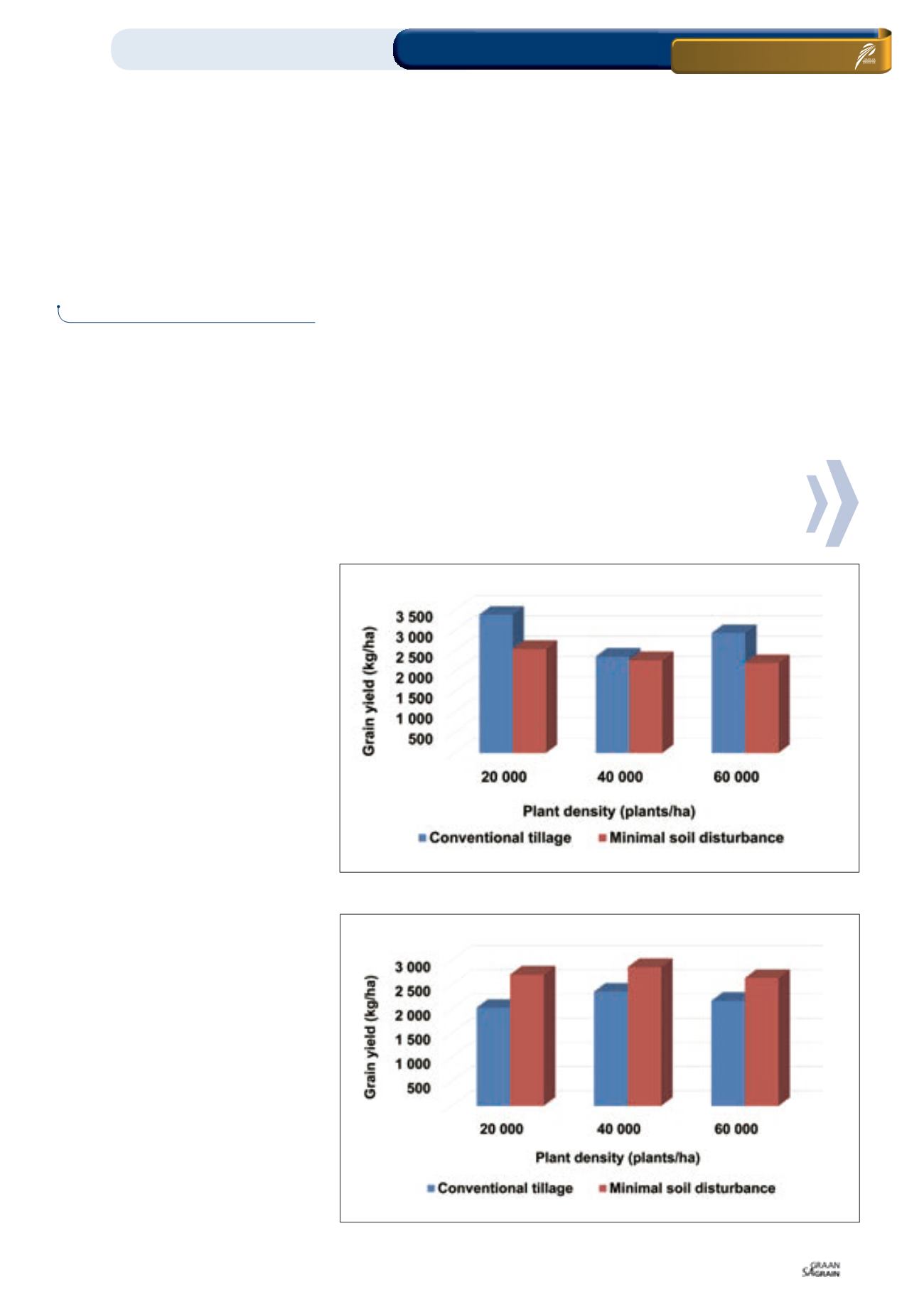
113
September 2014
ON FARM LEVEL
Management practices
Row spacing / Plant density / Productivity
Do row spacing and plant density
influencemaizeproductivity under
reduced tillage?
M
aize remains the staple food for many household diets
in South Africa, especially in rural communities.
However, crop yields under smallholder farming
practices are generally low. The inherent infertile soils
and the fluctuating weather due to climate change could worsen
the situation.
Large scale commercial farming had been the key contributor of
maize production in the country. However, many of these groups
are leaving the business; either due to reasons related to age or
that they cannot keep up due to the vast yearly price hikes in pro-
duction costs.
At present, numerous smallholder pro-
ducers own large hectares of agricultural
land benefited through LRAD programmes
and many of them are often inexperienced
in the field of agriculture. For that reason,
a great number of them are forced to retire
from farming and subsequently remainwith
loan burdens acquired that they cannot
repay.
That results in decreased production of
major crops. This could add huge pressure
on the production of food per capita should
the situation be left unattended for a few
years longer. Conservation agricultural (CA)
systems, such as minimal soil disturbance
(reduced tillage), crop rotation and soil
cover have been sought as an option to
conventional tillage practices in order to
reduce production costs and improve the
soil fertility status.
Although some producers, especially in the
maize production triangle, took advantage
of the benefits that CA can offer, most are
however still using old technology as if
they are producing under deep ploughing
(conventional tillage). That is, many are still
fond of using a standard row spacing of
0,90 m and even 1,5 m in some cases, as
well as the same plant population used
under deep ploughing. Likewise, producers
are still in search of the appropriate plant
population that could maximise yields and
bring net returns on investments under CA.
This can be due to the fact that the best
hybrids for CA are yet to be developed and
released for commercial use.
Practicing a reduced tillage system typical-
ly has problems related to the forming
of natural compaction, which is common
when proper rotation is not followed.
The situation could even worsen under
smallholder farming activities where recommended plant density
depends on the quantity of seed obtained due to cost. Plant breed-
ers should therefore in away fast-trackbreeding for improvedmaize
varieties that will be suitable under CA and make it accessible to
the whole range of farming enterprises. As part of the ARC-Grain
Crops Institute’s (ARC-GCI) CAprogrammes, this studywas initiated
to evaluate maize performance at different row spacing and plant
densities underminimal soil disturbance.
Evaluation information andmethod
On-farm, rainfed trials were conducted during 2012/2013 on
commercial producer fields at Buffelsvallei (North West) and
Viljoenskroon (FreeState).
CEDRICBALOYI,
ARC-GrainCrops Institute
Graph 1a: Effect of plant densityongrain yieldunder two tillagepractices at Buffelsvallei.
Graph 1b: Effect of plant densityongrain yieldunder two tillagepractices at Viljoenskroon.


